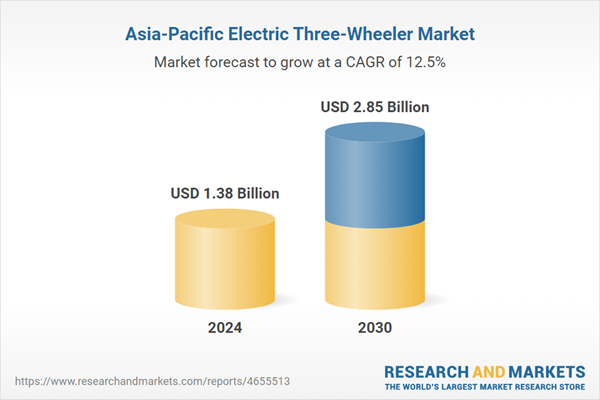Speak directly to the analyst to clarify any post sales queries you may have.
10% Free customizationThis report comes with 10% free customization, enabling you to add data that meets your specific business needs.
The scheme also counts dual-use facilities and land (up to 10%) linked to EV production. Approved firms get a 15% import duty rate on EVs priced over USD 35,000 (limit: 8,000 units/year for 5 years) and must meet 25% local value addition in 3 years and 50% in 5 years. A 120-day application window will open soon. Electric three-wheelers, primarily used for passenger and cargo transport, have emerged as practical and affordable options for short-distance urban travel. The market is characterized by the presence of both established automakers and regional startups, fostering innovation in design, battery efficiency, and motor performance. Investments in localized manufacturing and component supply chains have contributed to reduced production costs and improved market penetration.
Market Drivers
Rising Fuel Costs
Volatile and increasing fossil fuel prices are encouraging the adoption of electric vehicles, particularly in the commercial and urban mobility segments. Electric three-wheelers offer a cost-effective alternative to traditional petrol and diesel-powered vehicles. Operators can benefit from significantly lower per-kilometer costs, allowing them to maintain margins in a highly competitive transport industry. The consistent rise in fuel prices is making electric alternatives financially attractive for small business owners, gig workers, and delivery services. With electric vehicles offering predictable energy costs, planning for long-term operations becomes easier and more sustainable.Key Market Challenges
Limited Charging Infrastructure
The availability of adequate charging infrastructure remains a major bottleneck. In many cities and semi-urban regions, public charging points are either insufficient or poorly maintained. Electric three-wheelers, particularly those used for commercial purposes, require dependable and quick access to charging facilities to avoid downtime. While private companies and governments are expanding the network, the current pace is not fast enough to support large-scale EV adoption. This limitation hinders operators from confidently scaling their fleets and restricts the growth of the market beyond major urban centers.Key Market Trends
Integration of Battery Swapping Technology
Battery swapping is emerging as a practical solution to address range anxiety and downtime. This model allows users to exchange depleted batteries for fully charged ones within minutes. In highly active commercial use cases, such as last-mile delivery or urban transport, this approach eliminates the wait times associated with traditional charging. Swapping stations are being deployed in urban hubs, and new vehicle models are being designed with swappable battery packs. This trend supports higher vehicle utilization rates and is particularly beneficial for fleet operators.Key Market Players
- Mahindra Electric Mobility Limited
- Piaggio Vehicles Private Limited
- Atul Auto Limited
- Terra Motors Corporation
- Kinetic Green Energy and Power Solutions Limited
- Omega Seiki Mobility Private Limited
- Euler Motors Private Limited
- Lohia Auto Industries
- Gayam Motor Works Private Limited
- Saera Electric Auto Private Limited
Report Scope:
In this report, the Asia-Pacific Electric Three-Wheeler Market has been segmented into the following categories, in addition to the industry trends which have also been detailed below:Asia-Pacific Electric Three-Wheeler Market, By Vehicle Type:
- Passenger Carrier
- Load Carrier
Asia-Pacific Electric Three-Wheeler Market, By Battery Capacity:
- < 101Ah
- >101Ah
Asia-Pacific Electric Three-Wheeler Market, By Battery Type:
- Lead Acid
- Lithium Ion
Asia-Pacific Electric Three-Wheeler Market, By Country:
- China
- India
- Japan
- Vietnam
- Indonesia
- Australia
- Rest Of Asia Pacific
Competitive Landscape
Company Profiles: Detailed analysis of the major companies present in the Asia-Pacific Electric Three-Wheeler Market.Available Customizations:
Asia-Pacific Electric Three-Wheeler Market report with the given market data, TechSci Research, offers customizations according to the company’s specific needs. The following customization options are available for the report.Company Information
- Detailed analysis and profiling of additional market players (up to five).
This product will be delivered within 1-3 business days.
Table of Contents
Companies Mentioned
- Mahindra Electric Mobility Limited
- Piaggio Vehicles Private Limited
- Atul Auto Limited
- Terra Motors Corporation
- Kinetic Green Energy and Power Solutions Limited
- Omega Seiki Mobility Private Limited
- Euler Motors Private Limited
- Lohia Auto Industries
- Gayam Motor Works Private Limited
- Saera Electric Auto Private Limited
Table Information
| Report Attribute | Details |
|---|---|
| No. of Pages | 138 |
| Published | July 2025 |
| Forecast Period | 2024 - 2030 |
| Estimated Market Value ( USD | $ 1.38 Billion |
| Forecasted Market Value ( USD | $ 2.85 Billion |
| Compound Annual Growth Rate | 12.5% |
| Regions Covered | Asia Pacific |
| No. of Companies Mentioned | 10 |









